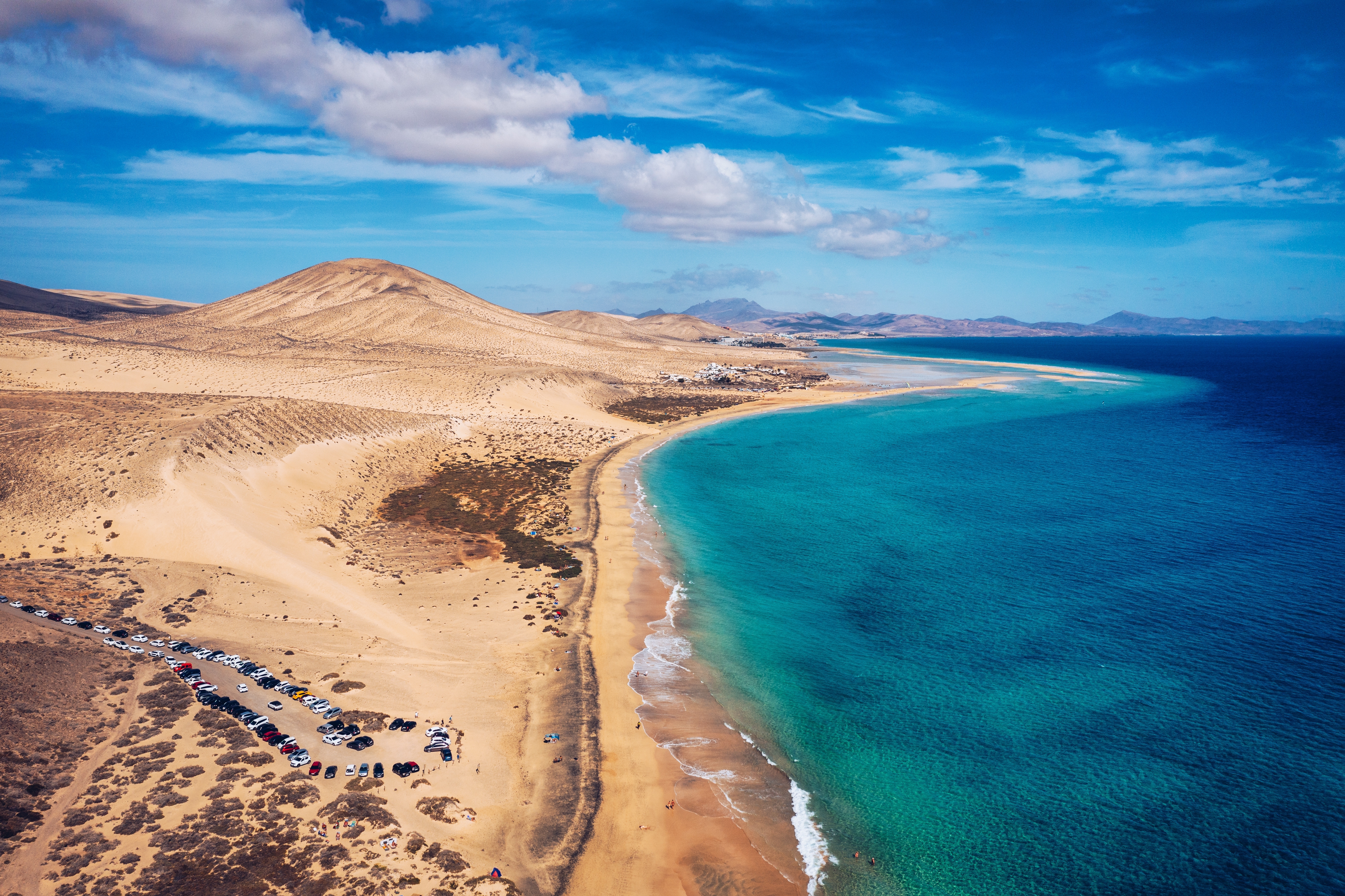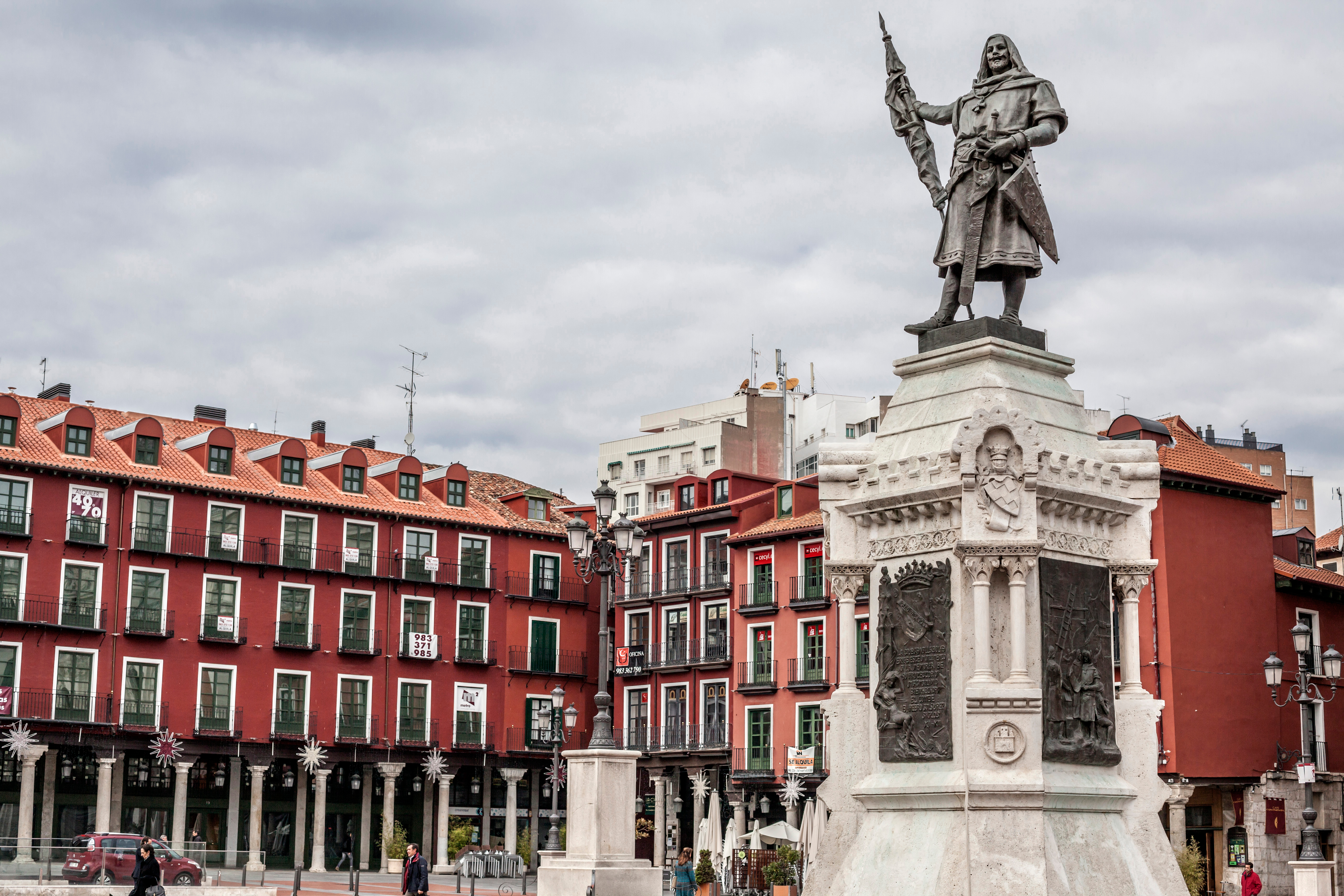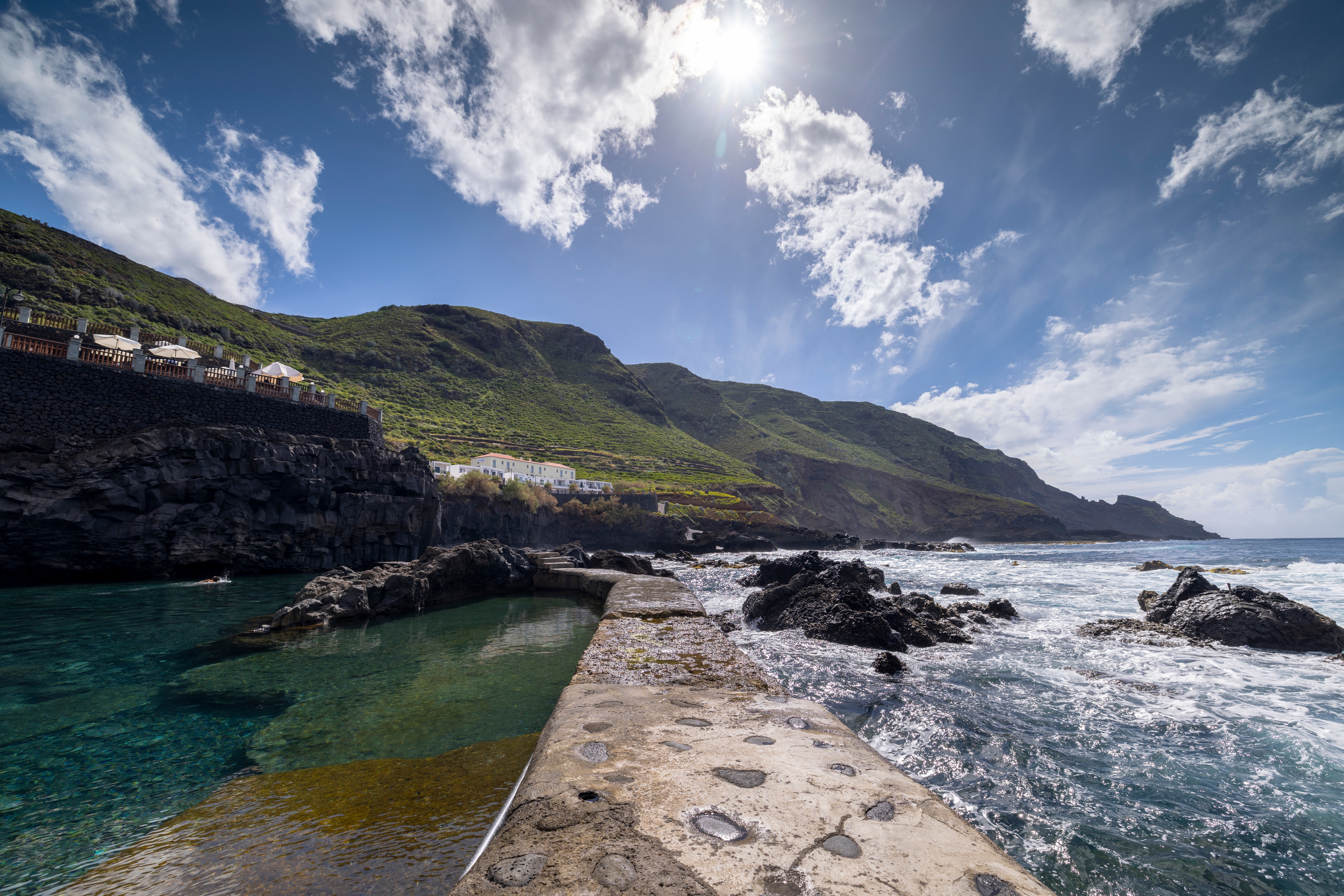3 days in Venice: from iconic sights to hidden corners
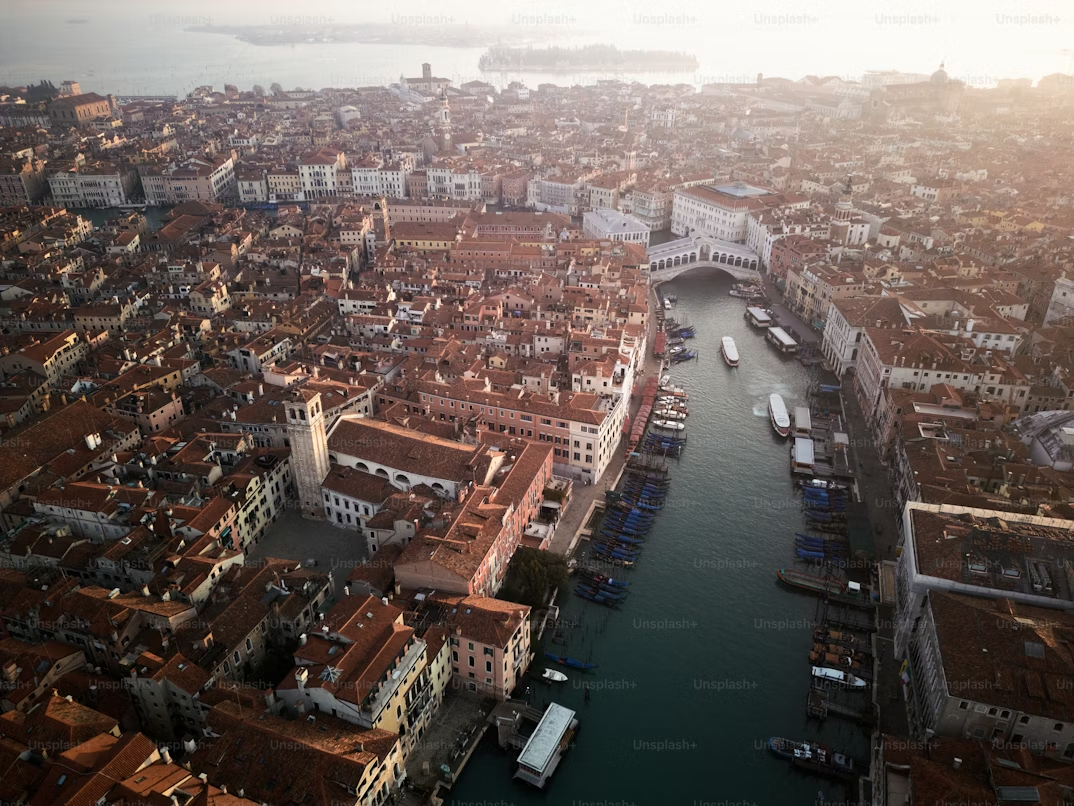
Planning a 3-day stay in Venice? 3 days provide just enough time to witness the city’s famous landmarks, appreciate its more peaceful moments and find locations that may not always be included in the guidebooks.
Why Venice is worth 3 days
Venice is best explored on foot. Sure, you could try to squeeze it into a day, but there’s a big difference between seeing the sights and actually getting a feel for the place. Giving yourself three days lets you slow down a bit — wander through the quieter backstreets, enjoy a second espresso without watching the clock, and visit landmarks without rushing. With a little more time, you can also look beyond the main island. Taking a ferry to Murano or Burano makes for a lovely side trip and adds a whole new layer to your visit.
Day 1 – Iconic Venice: piazzas, palaces and gondolas
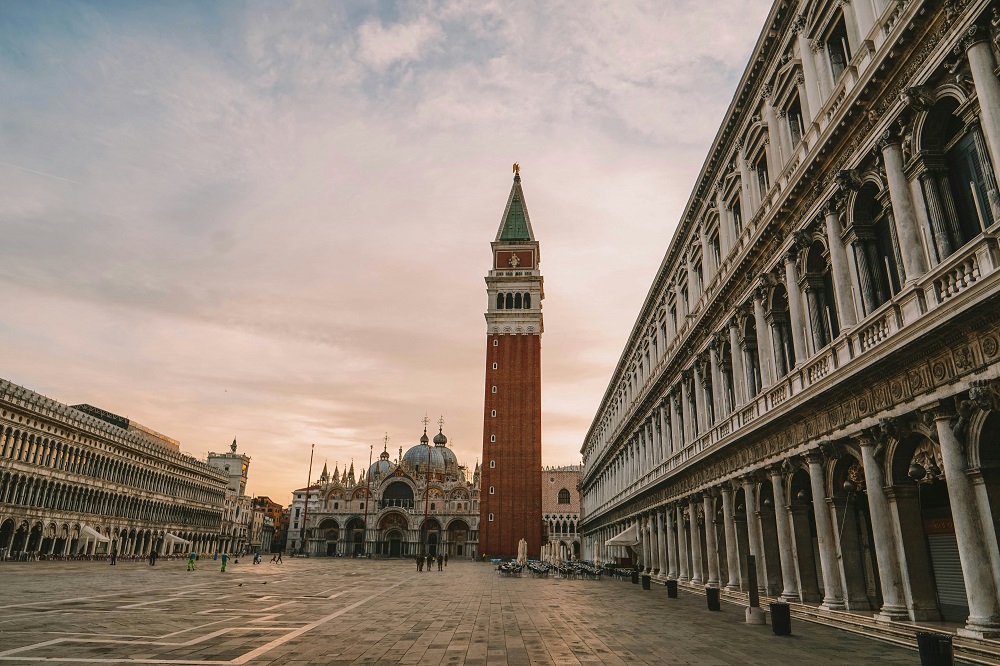
Piazza San Marco and St.Mark’s Basilica
Start your first day in Venice at Piazza San Marco. The square is imposing but inviting. If you arrive early, before the masses, you may be able to see the city waking up in the pale dawn light high above St. Mark’s Basilica’s dome.
The outside is impressive with its domes and mosaics, but the interior is equally fascinating. Gold accents, marble, and soft lighting make for a peaceful, welcoming ambiance. Admission is free, although you can pay extra to view some areas or reserve and go straight through without waiting. For the adventurous type, the upper balcony has a beautiful view of the piazza.
Visiting the Doge’s Palace and the Bridge of Sighs
Behind the basilica is the Doge’s Palace, which served as Venice’s government and the residence of the Doge for centuries. The palace appears intimidating on the exterior, but on the inside it appears surprisingly roomy. Wooden ceilings, spacious halls, and lovely paintings make it feel more like a museum than a government complex.
One of the strongest memories is walking over the Bridge of Sighs at the conclusion of your tour. It’s named after the belief that prisoners sighed here as they took their last glimpse of the city before prison. It’s a brief passageway with tiny windows and a melancholy atmosphere. Although the bridge’s exterior is frequently snapped, being on it puts you in touch with its history through your experience.
Sunset Gondola Ride Along the Grand Canal
There is something enchanting about viewing Venice from the water — it changes your whole perspective. A gondola ride is one of the city’s most timeless experiences. During sunset, when the canals are golden, Venice seems quieter and more tranquil.
You can find gondoliers in numerous places, particularly around the Rialto Bridge or Piazza San Marco. Prices are fixed on the rides but the routes and duration may change according to day or crowd situation, so check first.
If you prefer something a bit more relaxed, take a traghetto — a basic gondola ferry ride across the Grand Canal at a few different points. It’s a brief, uncomplicated trip served mostly by locals but does give you a flavor of life on the water.
Day 2 – Art, islands and authentic flavor
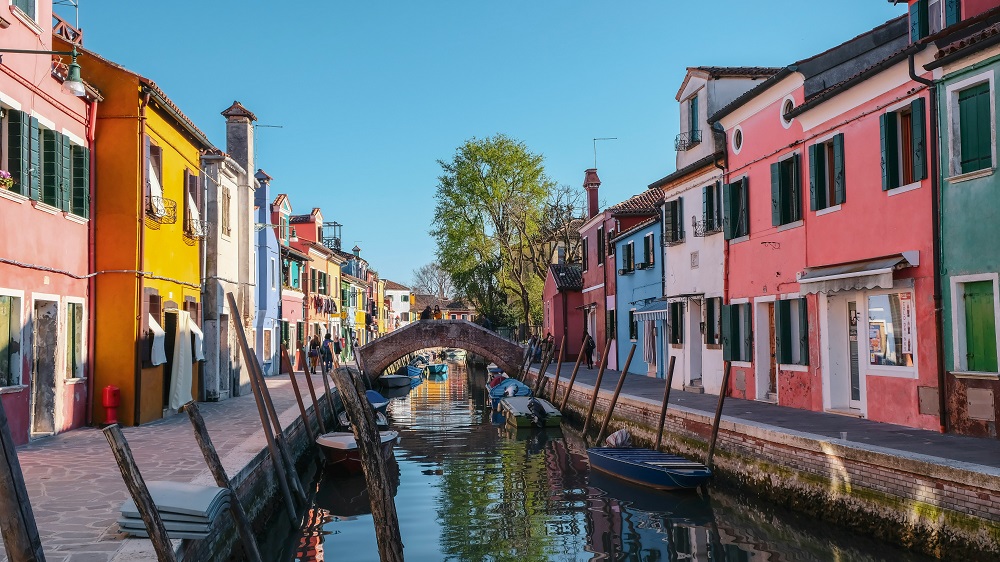
Dorsoduro and Venice’s art scene
Find the Serenity of Dorsoduro.
The move into Dorsoduro offers a less frenetic, more laid-back pace. This quieter area is favored by locals and students alike, and is easy to get around without a map. The canals here are more relaxed than in other parts of Venice, and there are lots of small cafés to drop into between walks.
An Artists’ Sanctuary.
If you like art, Dorsoduro is where you will want to spend your time. The Gallerie dell’Accademia houses artworks of Venetian masters like Titian and Bellini, giving a wide understanding of Venice’s contribution to the history of art. A short walk away is the Peggy Guggenheim Collection, a change of scene featuring 20th-century painters like Picasso and Pollock — all housed in an old mansion with views over the Grand Canal.
Wandering Without a Museum Ticket
Even if museums are not for you, Dorsoduro is a great district to walk around. The seafront promenade along Zattere has unobstructed views and some space to breathe, as well as some great places to grab gelato to make your stroll sweeter.
Making time for Santa Maria della Salute
If you happen to stroll along the Grand Canal without a specific itinerary, a stop at Santa Maria della Salute is time well spent. This baroque church, sitting atop the north side of Dorsoduro, is impossible to miss due to its bold white dome — one of Venice’s most recognizable features. Constructed in the 1600s as a gesture of thanksgiving following a devastating plague, it today serves as a serene place to sit and catch your breath after a hectic day.
A Quiet Refuge in Venice
The church is open to the public during regular visiting hours but usually closes for lunch, so it’s a good idea to check ahead if you’re on a tight schedule. Inside, you’ll find a bright, spacious interior with some artwork and a simple layout — a refreshing contrast to the more lavish churches elsewhere in Venice.
Even if you only pop in for a minute or two, Santa Maria della Salute provides a peaceful refuge from the city’s chaos. And the outside view, across the water back to San Marco, is a stunning added incentive to come here on its own.
Murano, Burano and Torcello
In the afternoon, spend some time visiting the islands immediately outside the city. They are within easy reach by vaporetto and each has its rhythm and character.
Murano is closest and boasts a glassmaking tradition that dates back centuries. You may see tiny workshops where glass is still hand-blown, or you may stroll along the numerous shops filled with highly colored vases, jewelry and lamps. Even if you have no inclination to purchase anything, it is worth watching the way the work is being done.
Then it’s another 30 minutes to Burano, a smaller island with rainbow-colored houses. The canals are tight, the bridges low, and the entire setting a relaxed haven from the more crowded sections of Venice. It’s also well-known for lace-making, though these days that’s more of a tradition than a full-time affair.
If you can spare the time and energy, Torcello is just one stop after Burano. It’s quieter again with open green areas, a handful of scattered houses, and an ancient cathedral with mosaic floors. It won’t take long to get around, but the contrast to the rest of the day makes the trip all the more special.
Dinner like a local in San Polo or Cannaregio
After a day of boats and island walks, head back to Venice for a relaxed evening in one of the city’s more lived-in neighborhoods. San Polo and Cannaregio are both great options if you’re looking for good food in places that feel less touristy and more everyday.
In San Polo, you’ll find small restaurants tucked between quiet squares and narrow streets. Many have outdoor tables when the weather’s nice, serving simple Venetian dishes like grilled fish, fresh pasta, and seasonal vegetables. Keep an eye out for handwritten specials on chalkboards near the door — those usually have the most authentic local flavors.
Cannaregio, to the north, attracts a younger, more local crowd, with several canalside bars perfect for a pre-dinner drink. It’s also the place to try cicchetti — little plates served at local bars called bacari. Think of it as Venice’s take on tapas, best enjoyed with a glass of wine or a refreshing spritz.
A peaceful table, good service, and a short stroll home usually make the perfect way to end your day.
Day 3 – Hidden corners and local favorites
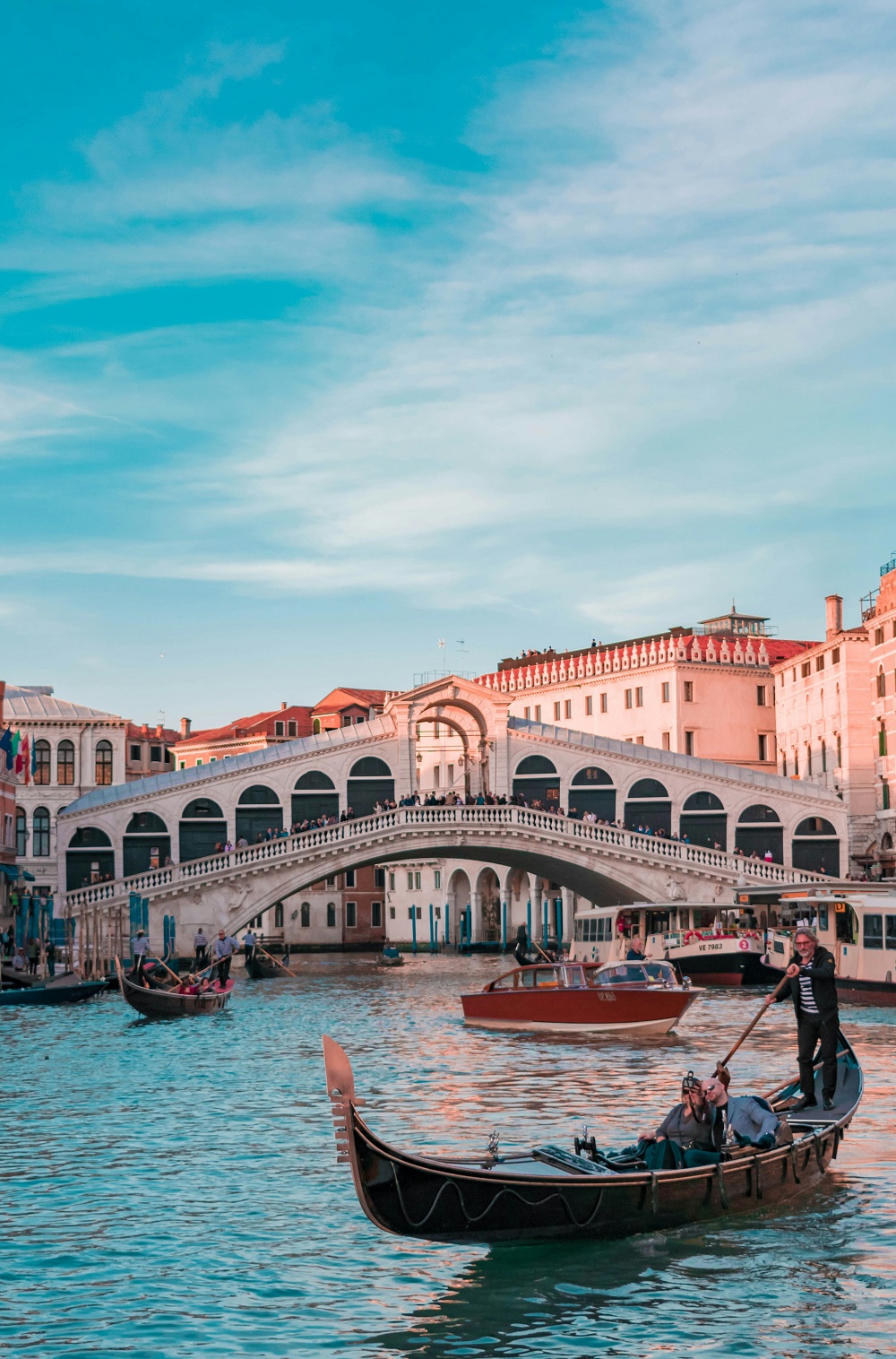
Walks, bookstores, and sky views
Start your final day with a leisurely stroll through some lesser-known parts of the city. Without a strict plan, you’re likely to stumble upon hidden canals and quiet residential courtyards. One spot worth making a point to visit is Libreria Acqua Alta. This tiny bookstore is famous for its stacks of books piled high inside bathtubs, boats, and even a full-sized gondola—part practical, part delightfully quirky.
Nearby is Contarini del Bovolo, a tiny palace famous for its striking spiral staircase. It’s slightly underappreciated, but the brief ascent up has one of Venice’ finest views waiting for you. Another terrific spot is the Fondaco dei Tedeschi rooftop garden, a department store close to the Rialto Bridge. Entry is free, but do pre-book your slot.
Relaxing on San Giorgio Maggiore
Just opposite Piazza San Marco, the small island of San Giorgio Maggiore provides some of Venice’s most breathtaking views. It’s just a vaporetto ride away and a tranquil spot to get away from the fray.
The Palladian church of San Giorgio Maggiore is the focal point here. Its gleaming white façade fronts onto the lagoon, and the interior is light and serene. For a small payment, you can ride the elevator to the top of the bell tower, where you’ll have a panoramic view of the city roofs, the domes of San Marco, and the waterways in between. It’s a peaceful spot that seems worlds away from the more congested vantage points.
Later, you may walk around the island or sit on a bench by yourself. It’s an ideal place to unwind on your final day in Venice.
Going off with no map when leaving
Take some aimless walking for an hour or two before you leave. No place to go, no time table—just wander on empty streets, cross any bridge that draws your eye, and let the city take you where it will. This is when Venice tends to be most intimate and personal. You may find a hidden piazza filled with children playing or a canal so placid it seems like a secret.
At this point, there’s no rush to check off sights. Maybe pause for a coffee, peek into a little shop, or simply sit by the water and soak it all in. When it’s time to go, you’ll feel like you’ve seen more than just the tourist highlights—you’ll have given Venice the chance to feel a bit like home.
Practical travel tips for visiting Venice
Where to stay in Venice ?
Venice is relatively easy to navigate with a little advance planning. These are some tips to ensure your journey is smoother.
Staying at a hotel around the central areas such as the Rialto Bridge, St. Mark’s Basilica, or the Doge’s Palace will put you at walking distance from most daily sightseeing points. This allows you to easily drop in for breaks or quick naps whenever you need to.
For quiet morning or evening strolls, stay close to the Grand Canal or in quiet neighborhoods such as Dorsoduro. These locations place you near lots of museums and have a more peaceful environment. Wherever you stay, keep in mind that most locations in Venice are only a bridge or two from the highlights.
It is advisable to make early reservations, particularly in the peak spring and fall periods when popular destinations are always booked up quickly.
Useful tips to enjoy Venice without inconveniences
- Travel: The city is easily walked and most major sites are accessible within walking distance. For longer distances or to access the islands, the vaporetto (water bus) is best. Single fares are available, but if you will be staying a couple of days, the multi-day pass usually saves money and time.
- When to visit: Spring and early autumn are for good reason. The weather can be pleasant and the city is lively but not too much so. Summer is sweltering and the city is packed, and winter is quiet and more localized in feel, albeit with a lot of fog or acqua alta (seasonal high water).
- Where to stay: Try to book accommodations close to a vaporetto stop if you are packing bags. Staying outside of the central tourist zones like in Dorsoduro or Cannaregio can offer more for money and less frenetic surroundings.
- Cultural tidbits: Restaurants do not begin at dinner time, and a few little stores shut down in the afternoon. Lunch is eaten between 12:30 and 2:30 p.m., however supper is not served until 7:00 p.m. in most establishments.
But note that when walking about at night, people are to be secretive, especially in housing areas.
Finally, don’t worry excessively about getting lost. It’s all worth it, and the city is not big so you can always figure out how to make your way back.
Explore more of Italy with Europcar
Once you’ve had your dose of canals and quiet side streets, you may be prepared to venture beyond Venice. Having your car can be handy.
Collecting a hire car from Europcar is simple in Venice. There are handy outlets both in Mestre on the mainland and at the airport with a variety of cars to match every type of holiday. From two-seaters for couples to larger vehicles for families or groups of up to four. It’s a sensible option to travel around Italy without relying on train timetables or transfers.
If you intend to go farther or wish to pair Venice with other destinations, look into Europcar’s options.
